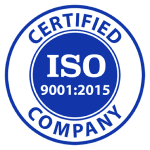Rapid growth in the last few years and supply constraints since COVID-19 have created a boom time for sellers across many industries. Businesses hungry for growth have placed low hurdles on sellers to prove value, resulting in increased sales despite stagnant pricing that hasn’t been seen since the 1970s.
But the situation is changing rapidly. We are moving from an economy of limitless demand, with cheap money available for anyone who wants it, into a new era where money is expensive and buyers will look for much stronger return on investment (ROI) before making new purchases. Demand is plateauing and as supply comes back online we are seeing the early signs of an overall flight to value. Budgets are constrained or cut, layoffs are becoming more common, and projects or purchases will require much clearer returns on investment.
The following are signs that companies are shifting focus:
A food company has expanded rapidly and aggressively in a period of value chain scarcity by keeping on hand a basic supply of ingredients and meeting reasonable delivery expectations. But demand is slowing, and the company needs to show customers that it can help reduce overall costs (of products, inventory, and labor) as well as grow the top line.
A software company that grew rapidly during COVID-19 by offering point solutions that had the potential to accelerate digital transformation is now being challenged much more directly by customers to prove ROI with hard data.
The reference value is what the buyer already has, and the differentiation value is what you are offering in addition.
However, rather than showing each buyer how their unique combination of reference and differentiation values adds up to a specific dollar amount, use a standard value calculator that will produce a ready-made number for each product or customer. These calculators can be embedded into your sales motions or as part of your customer qualification processes and incorporated into standard sales actions which live within your CRM systems.
Give the following interactive calculators a try:
Example A: Clari Revenue Leak Assessment value calculator – Clari is a leading revenue collaboration and governance platform that is using a value calculator to help sales professionals identify potential revenue leakage. Demo it here.
Example B: NetApp Cost Savings value calculator – NetApp is a leading cloud data services company that is using a value calculator to help potential customers instantly quantify potential cost savings with cloud storage consolidation. Demo it here.

Building a scalable and replicable pricing process is often a daunting challenge for executive teams because of many barriers, real or perceived. A key part of the secret to building such a process is to understand and anticipate these barriers.
Lack of information: Estimating the value to the customer is complex, and customers typically have little incentive to disclose operational information that would help reveal the full value of your product or service.
Proving it:Even when testing provides ample evidence, customers often need to see the benefits themselves before they believe them. New customers are a tougher sell than repeat buyers.
Buyers versus users:The person making the buying decision may not be the same person who uses the product and may have different objectives, such as minimizing costs rather than maximizing net value for the company.
Psychology: Customers often have a hard time accepting a significantly higher price for a product, even when they believe that it offers greater value. This is known as “sticker shock,” and it can be particularly true for new products or unexpected price increases.
Companies must anticipate points of resistance to value selling and address them with appropriate questions. The more often you engage in this process, the more skilled you become at quantifying value, and the higher prices you can justify.
To scale this approach, companies must gain alignment around value-selling management mandate across sales, marketing and customer success organizations. This affects organizational design and selection of processes and technologies.
Value selling is a skill that many salespeople need to ramp up or didn’t use as much over the last few years of supply scarcity and high demand. Salespeople need to retrain, hone their skills and make it part of their muscle memory. Incentives also should reflect this focus on value pricing. These actions can make a huge impact for your company. By taking the four steps above, you can position yourself and your company for value selling and take advantage of current economic trends as a springboard for revenue growth in 2023.
Customer Economics and Value
Now is the right time for sales organizations to get serious about value selling and value pricing. But value selling is not easy. How do you win in the new environment? We recommend four actions to position your company for sales success:Understand the current opportunities and pain points of your customer:
To improve the likelihood of securing budget, you will need to equip your advocate with a clear savings or growth story. To develop this story, you won’t be able to pass “go” until you confirm that your client has real pain or a real opportunity. The good news is that it isn’t hard to confirm the level of pain or opportunity, as you can use estimates based on your client’s size (employees, revenue), industry and current use of solutions and technologies before you quantify company-specific numbers.Quantify value to the customer:
To understand the value of your product, it is important to quantify its value relative to the customer’s next best alternative. Differentiation value is the incremental benefit that your product offers over the competition, while reference value is the price of your customer’s next best alternative. For example, if Company A charges $300 for a product and Company B charges $250, making $250 the “next best alternative”, it is important to understand whether there is any additional value in paying more for Company A’s product. For instance, if Company A has technical superiority or better service and support than Company B, this will justify a higher price tag for its productExhibit 1: The reference value can take many forms:
| Buy a different product | What does it cost to buy the best suited competing product? |
| Delay the purchase | What does it cost to wait for a better price? |
| Change the need | What does it cost to reconfigure or replace the machine or process so you no longer need the company’s product? |
| Do nothing | What does it cost to avoid the purchase and live without the product or service? |
Exhibit 2: There also can be multiple sources of differentiation:
| Technical superiority | Product performs (or is perceived to perform) better than competing products |
| Brand value | Brand is perceived as higher value by customers, or brings greater emotional peace of mind |
| Services and support | The perceived value of the company’s support for the product |
| Integrated services | The perceived value of any related services provided with the product |
| Transaction costs | The transaction cost compared to competitors |
| Financial structures and credit | The financing solutions compared to competitors |
Give the following interactive calculators a try:
Example A: Clari Revenue Leak Assessment value calculator – Clari is a leading revenue collaboration and governance platform that is using a value calculator to help sales professionals identify potential revenue leakage. Demo it here.
Example B: NetApp Cost Savings value calculator – NetApp is a leading cloud data services company that is using a value calculator to help potential customers instantly quantify potential cost savings with cloud storage consolidation. Demo it here.
Exhibit 3: Value calculator examples (Clari and NetApp):

Building a scalable and replicable pricing process is often a daunting challenge for executive teams because of many barriers, real or perceived. A key part of the secret to building such a process is to understand and anticipate these barriers.
Lack of information: Estimating the value to the customer is complex, and customers typically have little incentive to disclose operational information that would help reveal the full value of your product or service.
Proving it:Even when testing provides ample evidence, customers often need to see the benefits themselves before they believe them. New customers are a tougher sell than repeat buyers.
Buyers versus users:The person making the buying decision may not be the same person who uses the product and may have different objectives, such as minimizing costs rather than maximizing net value for the company.
Psychology: Customers often have a hard time accepting a significantly higher price for a product, even when they believe that it offers greater value. This is known as “sticker shock,” and it can be particularly true for new products or unexpected price increases.
Companies must anticipate points of resistance to value selling and address them with appropriate questions. The more often you engage in this process, the more skilled you become at quantifying value, and the higher prices you can justify.
To scale this approach, companies must gain alignment around value-selling management mandate across sales, marketing and customer success organizations. This affects organizational design and selection of processes and technologies.
Build New Muscle Memory
In today’s economic environment, many companies have found that deploying a value-based selling approach is critical for their success. A well-executed value-based approach can help your company meet its goals or bring in significant incremental revenue. For example, if your organization has 100-1000+ sales reps, this approach could help you meet targets for 2023.Value selling is a skill that many salespeople need to ramp up or didn’t use as much over the last few years of supply scarcity and high demand. Salespeople need to retrain, hone their skills and make it part of their muscle memory. Incentives also should reflect this focus on value pricing. These actions can make a huge impact for your company. By taking the four steps above, you can position yourself and your company for value selling and take advantage of current economic trends as a springboard for revenue growth in 2023.






